Citroen C5 Aircross vs Hyundai Kona – Which one offers the better deal?
Compare performance, boot capacity, efficiency and price at a glance.
Find out which car is the better choice for you – Citroen C5 Aircross or Hyundai Kona?
Costs and Efficiency:
Price and efficiency are often the first things buyers look at. Here it becomes clear which model has the long-term edge – whether at the pump, the plug, or in purchase price.
Hyundai Kona has a clearly perceptible advantage in terms of price – it starts at 23100 £, while the Citroen C5 Aircross costs 29100 £. That’s a price difference of around 6077 £.
Fuel consumption also shows a difference: Citroen C5 Aircross manages with 2.50 L and is therefore convincingly more efficient than the Hyundai Kona with 4.60 L. The difference is about 2.10 L per 100 km.
In terms of energy consumption, the advantage goes to the Hyundai Kona: with 14.60 kWh per 100 km, it’s slightly more efficient than the Citroen C5 Aircross with 17 kWh. That’s a difference of about 2.40 kWh.
As for range, the Citroen C5 Aircross performs hardly perceptible better – achieving up to 520 km, about 6 km more than the Hyundai Kona.
Engine and Performance:
Power, torque and acceleration are the classic benchmarks for car enthusiasts – and here, some clear differences start to show.
When it comes to engine power, the Hyundai Kona has a barely noticeable edge – offering 218 HP compared to 210 HP. That’s roughly 8 HP more horsepower.
In acceleration from 0 to 100 km/h, the Hyundai Kona is minimal quicker – completing the sprint in 7.80 s, while the Citroen C5 Aircross takes 8.30 s. That’s about 0.50 s faster.
In terms of top speed, the Citroen C5 Aircross performs barely noticeable better – reaching 220 km/h, while the Hyundai Kona tops out at 210 km/h. The difference is around 10 km/h.
There’s also a difference in torque: Citroen C5 Aircross pulls slightly stronger with 300 Nm compared to 265 Nm. That’s about 35 Nm difference.
Space and Everyday Use:
Whether family car or daily driver – which one offers more room, flexibility and comfort?
Both vehicles offer seating for 5 people.
In curb weight, Hyundai Kona is slightly lighter – 1370 kg compared to 1629 kg. The difference is around 259 kg.
In terms of boot space, the Citroen C5 Aircross offers to a small extent more room – 565 L compared to 466 L. That’s a difference of about 99 L.
In maximum load capacity, the Citroen C5 Aircross performs distinct better – up to 1668 L, which is about 368 L more than the Hyundai Kona.
When it comes to payload, Hyundai Kona barely noticeable takes the win – 490 kg compared to 471 kg. That’s a difference of about 19 kg.
Who comes out on top?
Overall, the Citroen C5 Aircross shows itself to be leaves the rival little chance and secures the title of DriveDuel Champion.
It convinces with the more balanced overall package and proves to be the more versatile choice for everyday use.
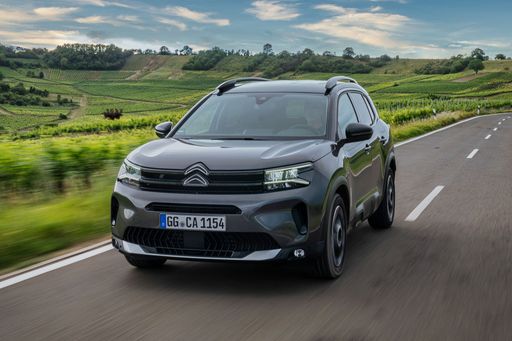
Citroen C5 Aircross
Citroen C5 Aircross
The Citroen C5 Aircross stands out in the SUV market with its distinctively bold design and emphasis on comfort. Its interior is thoughtfully crafted, providing spaciousness and a plethora of features that cater to passenger convenience and enjoyment. With its smooth ride and refined driving dynamics, it offers a relaxing experience for both city commutes and long-distance journeys.
details @ media.stellantis.com
@ media.stellantis.com
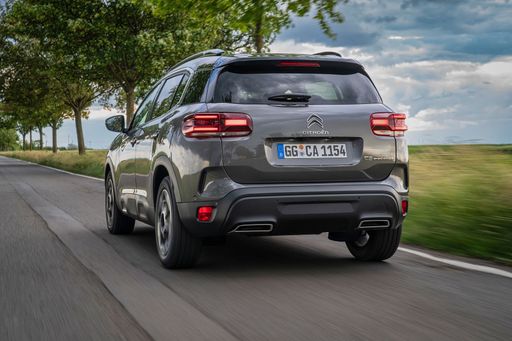 @ media.stellantis.com
@ media.stellantis.com
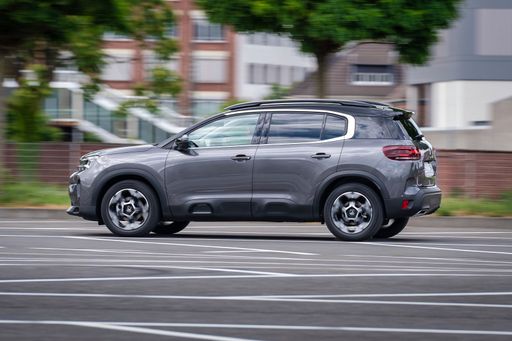 @ media.stellantis.com
@ media.stellantis.com
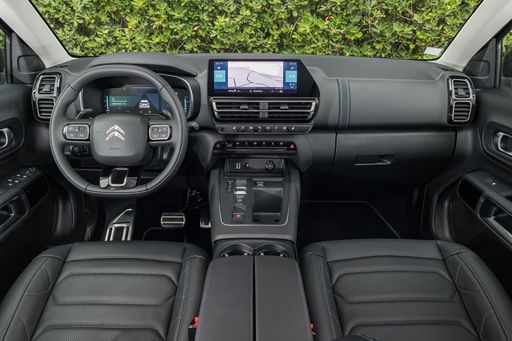 @ media.stellantis.com
@ media.stellantis.com
Hyundai Kona
The Hyundai Kona blends a bold design with a versatile interior, making it a standout choice in the compact SUV market. Its crisp handling and responsive steering provide an engaging driving experience, whether in the city or on the open road. The vehicle also offers a range of features designed to enhance comfort and connectivity, ensuring a pleasurable journey for both driver and passengers.
details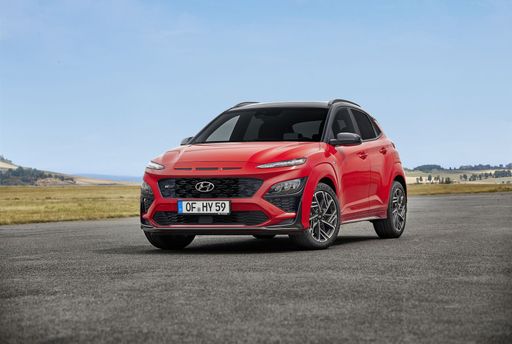 @ hyundai.news
@ hyundai.news
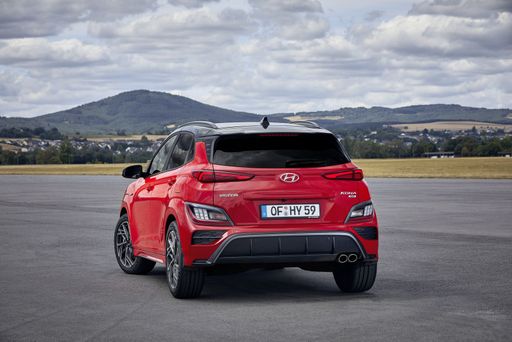 @ hyundai.news
@ hyundai.news
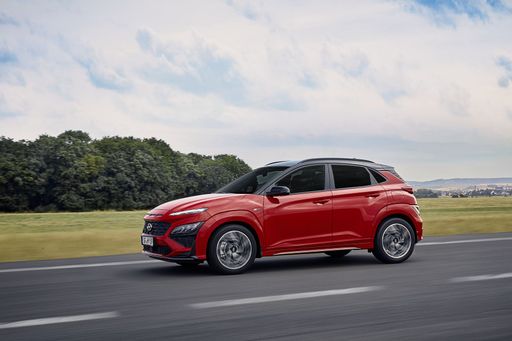 @ hyundai.news
@ hyundai.news
 @ hyundai.news
@ hyundai.news

|

|
|
|
|
Costs and Consumption |
|
|---|---|
|
Price
29100 - 41600 £
|
Price
23100 - 41600 £
|
|
Consumption L/100km
2.5 - 5.4 L
|
Consumption L/100km
4.6 - 7 L
|
|
Consumption kWh/100km
17 kWh
|
Consumption kWh/100km
14.6 - 16.8 kWh
|
|
Electric Range
81 - 520 km
|
Electric Range
377 - 514 km
|
|
Battery Capacity
17.8 - 73 kWh
|
Battery Capacity
1.3 - 65.4 kWh
|
|
co2
0 - 121 g/km
|
co2
0 - 163 g/km
|
|
Fuel tank capacity
55 L
|
Fuel tank capacity
38 - 47 L
|
Dimensions and Body |
|
|---|---|
|
Body Type
SUV
|
Body Type
SUV
|
|
Seats
5
|
Seats
5
|
|
Doors
5
|
Doors
5
|
|
Curb weight
1629 - 2184 kg
|
Curb weight
1370 - 1773 kg
|
|
Trunk capacity
565 L
|
Trunk capacity
466 L
|
|
Length
4650 mm
|
Length
4350 - 4385 mm
|
|
Width
1870 mm
|
Width
1825 mm
|
|
Height
1695 mm
|
Height
1580 - 1585 mm
|
|
Max trunk capacity
1668 L
|
Max trunk capacity
1300 L
|
|
Payload
446 - 471 kg
|
Payload
420 - 490 kg
|
Engine and Performance |
|
|---|---|
|
Engine Type
Petrol MHEV, Electric, Plugin Hybrid
|
Engine Type
Electric, Petrol, Full Hybrid
|
|
Transmission
Automatic
|
Transmission
Automatic, Manuel
|
|
Transmission Detail
Dual-Clutch Automatic, Reduction Gearbox
|
Transmission Detail
Manual Gearbox, Dual-Clutch Automatic
|
|
Drive Type
Front-Wheel Drive
|
Drive Type
Front-Wheel Drive, All-Wheel Drive
|
|
Power HP
145 - 210 HP
|
Power HP
115 - 218 HP
|
|
Acceleration 0-100km/h
8.3 - 11.2 s
|
Acceleration 0-100km/h
7.8 - 11.9 s
|
|
Max Speed
170 - 220 km/h
|
Max Speed
162 - 210 km/h
|
|
Torque
230 - 300 Nm
|
Torque
200 - 265 Nm
|
|
Number of Cylinders
3 - 4
|
Number of Cylinders
3 - 4
|
|
Power kW
107 - 157 kW
|
Power kW
85 - 160 kW
|
|
Engine capacity
1199 - 1598 cm3
|
Engine capacity
998 - 1598 cm3
|
General |
|
|---|---|
|
Model Year
2025
|
Model Year
2024 - 2025
|
|
CO2 Efficiency Class
D, A, B
|
CO2 Efficiency Class
A, D, C, E, F
|
|
Brand
Citroen
|
Brand
Hyundai
|
What drive types are available for the Citroen C5 Aircross?
The Citroen C5 Aircross is available as Front-Wheel Drive.
The prices and data displayed are estimates based on German list prices and may vary by country. This information is not legally binding.
